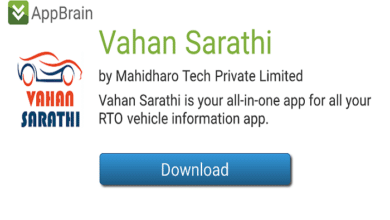Delhi Parivahan Sewa: A Comprehensive Guide

Introduction
Delhi, the bustling capital of India, is known for its rich history, vibrant culture, and, unfortunately, its notorious traffic. Navigating through this urban jungle can be daunting, but thanks to Delhi Parivahan Sewa, the public transportation system has significantly improved. This blog post delves into the various facets of Delhi Parivahan Sewa, offering a detailed guide on how it enhances the commuting experience in the city.
What is Delhi Parivahan Sewa?
Delhi Parivahan Sewa, or Delhi Transport Service, is the umbrella term for all public transportation services in Delhi. It includes buses, metro, auto-rickshaws, and other means of public transport managed by the Delhi Transport Corporation (DTC) and Delhi Metro Rail Corporation (DMRC). Delhi Parivahan Sewa aims to provide safe, reliable, and affordable transportation to the city’s residents and visitors.
History of Delhi Parivahan Sewa
Delhi Parivahan Sewa has evolved over the decades. The DTC was established in 1948, and since then, it has played a crucial role in the city’s transportation network. The introduction of the Delhi Metro in 2002 marked a significant milestone, revolutionizing public transport in the city. Over the years, Delhi Parivahan Sewa has expanded its services and modernized its fleet to cater to the growing population.
Delhi Metro: The Backbone of Delhi Parivahan Sewa
The Delhi Metro is a vital component of Delhi Parivahan Sewa. It is one of the largest metro networks in the world, covering over 390 kilometers and 285 stations. The metro is known for its punctuality, cleanliness, and efficiency, making it the preferred mode of transport for millions of commuters daily. With its seamless connectivity, the Delhi Metro has significantly reduced travel time and eased traffic congestion.
DTC Buses: The Lifeline of Delhi Parivahan Sewa
DTC buses form the backbone of Delhi Parivahan Sewa. The DTC operates a fleet of over 3,000 buses, including low-floor, air-conditioned, and electric buses. These buses cover an extensive network of routes, ensuring connectivity to even the remotest parts of the city. With features like GPS tracking and real-time updates, DTC buses have become more reliable and commuter-friendly.
Introducing Cluster Buses in Delhi Parivahan Sewa
To further enhance Delhi Parivahan Sewa, the Delhi government introduced cluster buses under the Cluster Scheme. These buses are operated by private companies but are regulated by the government to ensure service standards. The cluster buses complement the DTC fleet and offer additional options for commuters, thereby improving the overall efficiency of Delhi Parivahan Sewa.
Smart Ticketing Solutions in Delhi Parivahan Sewa
Delhi Parivahan Sewa has embraced technology to make commuting more convenient. The introduction of smart cards and mobile ticketing apps has revolutionized the ticketing system. Commuters can now recharge their cards online, use contactless payments, and even purchase tickets through mobile apps. These innovations have streamlined the process, reducing queues and saving time for passengers.
Safety Measures in Delhi Parivahan Sewa
Safety is a paramount concern for Delhi Parivahan Sewa. Both DTC buses and Delhi Metro have implemented various safety measures to protect commuters. CCTV cameras, panic buttons, and dedicated women’s compartments are some of the features that ensure a safe travel experience. Additionally, the presence of security personnel in buses and metro stations enhances the security framework.
Environmental Initiatives by Delhi Parivahan Sewa
Delhi Parivahan Sewa is committed to reducing its environmental impact. The introduction of electric buses and the promotion of CNG-powered vehicles are steps towards sustainable transportation. The Delhi Metro also plays a significant role in reducing the city’s carbon footprint by providing a greener alternative to road transport. These initiatives contribute to a cleaner and healthier environment.
Challenges Faced by Delhi Parivahan Sewa
Despite its achievements, Delhi Parivahan Sewa faces several challenges. Traffic congestion, rising operational costs, and maintaining service quality are some of the issues. Moreover, the growing population and increasing demand for public transport put pressure on the existing infrastructure. Addressing these challenges is crucial for the continued success of Delhi Parivahan Sewa.
The Future of Delhi Parivahan Sewa
The future of Delhi Parivahan Sewa looks promising. The government plans to expand the metro network, introduce more electric buses, and enhance the overall infrastructure. Initiatives like the Integrated Transport System aim to create a seamless and efficient transportation network. With continuous improvements and innovations, Delhi Parivahan Sewa is set to become a model for urban public transport.
Conclusion
Delhi Parivahan Sewa plays a pivotal role in the daily lives of millions of Delhiites. From the extensive metro network to the reliable DTC and cluster buses, the city’s public transport system is a lifeline for its residents. While there are challenges, the continuous efforts to modernize and expand services ensure that Delhi Parivahan Sewa remains an efficient and sustainable mode of transport. As Delhi moves towards a smarter and greener future, the importance of a robust public transport system cannot be overstated.
FAQs
1. What is Delhi Parivahan Sewa? Delhi Parivahan Sewa encompasses all public transport services in Delhi, including DTC buses, Delhi Metro, auto-rickshaws, and more.
2. How has the Delhi Metro improved public transport in the city? The Delhi Metro has significantly reduced travel time, eased traffic congestion, and provided a reliable and efficient mode of transport.
3. What are cluster buses in Delhi Parivahan Sewa? Cluster buses are privately operated buses regulated by the government to complement the DTC fleet and improve public transport services.
4. What safety measures are in place in Delhi Parivahan Sewa? Safety measures include CCTV cameras, panic buttons, dedicated women’s compartments, and security personnel in buses and metro stations.
5. How is Delhi Parivahan Sewa promoting sustainable transportation? Initiatives like the introduction of electric buses, promotion of CNG-powered vehicles, and the green initiatives of the Delhi Metro contribute to sustainable transportation.
Discover 9xflix com your ultimate destination for streaming the latest movies and TV shows online. Enjoy a vast collection, user-friendly interface, and seamless viewing experience. Start watching now!





